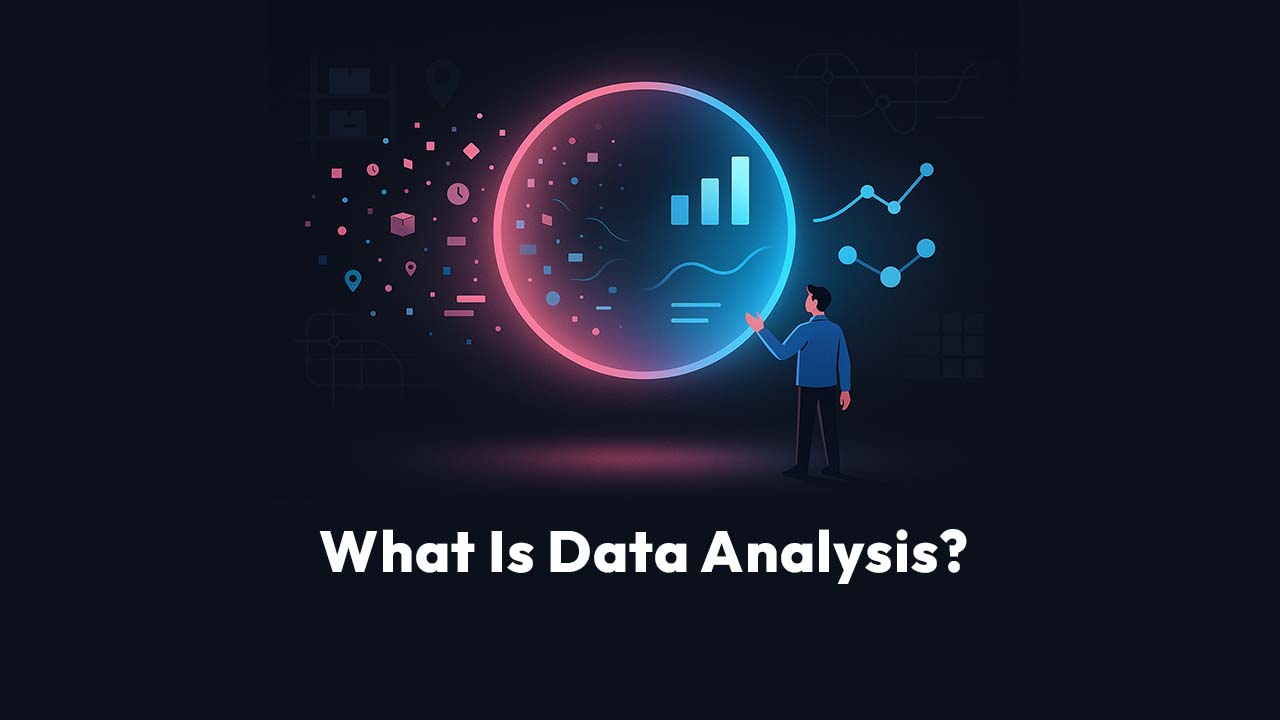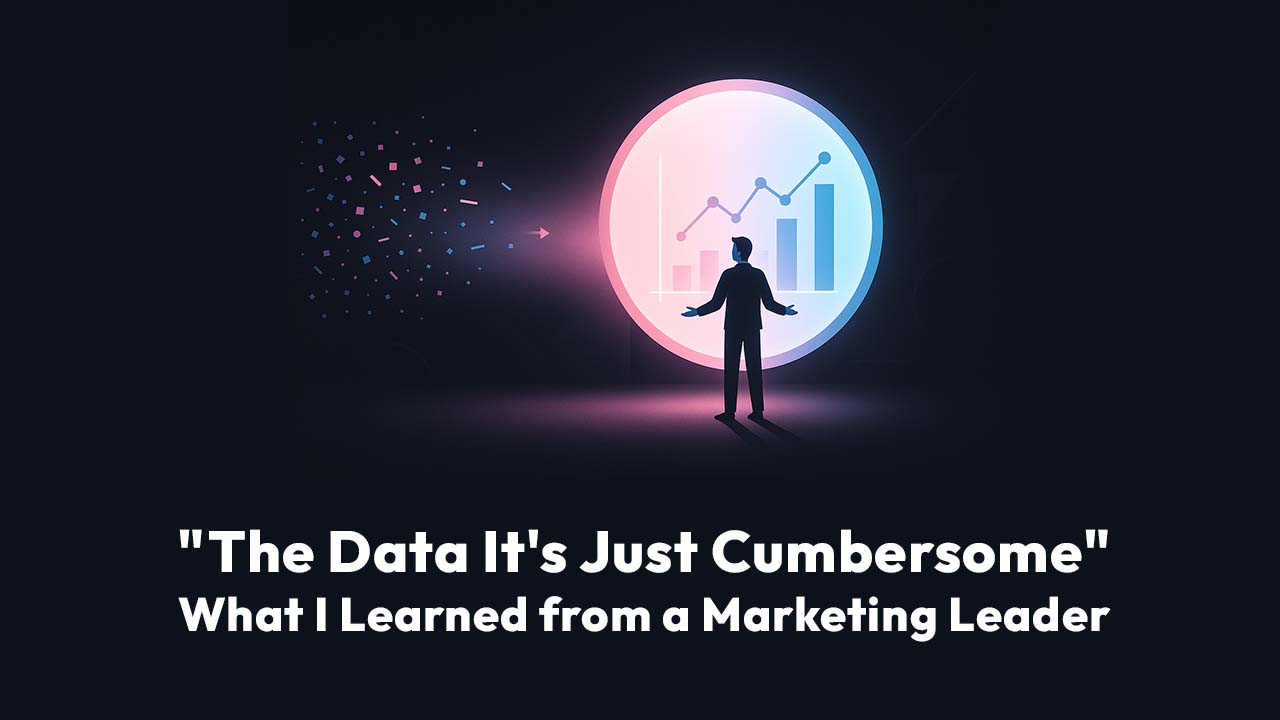How Can POS Sales Analytics Improve Your Sales?
Let's cut through the noise: Most sales teams are drowning in data but starving for insights.
Your POS system is recording thousands of transactions every week. Each swipe, tap, or scan contains clues about why customers return—or why they don't.
Yet here's the uncomfortable truth: 80% of businesses never look beyond basic sales totals. They're sitting on a goldmine of behavioral data and treating it like a receipt drawer.
We've watched sales operations teams transform their repeat purchase rates by 40% in under six months. Not through aggressive discounting or flashy campaigns, but by simply understanding what their data was already telling them.
What Is Sales Analytics and Why Should You Care?
Sales analytics is the systematic examination of sales data to uncover patterns, predict outcomes, and guide strategic decisions.
Think of it as the difference between knowing you made $50,000 last month and understanding that 60% came from 12% of your customers, who all purchased on Thursdays, and who haven't received a single personalized message from you.
Here's what sales analytics actually looks like in practice: A coffee shop owner notices their POS data shows a customer named Sarah visits every Tuesday and Friday morning, always orders a large latte, and occasionally adds a croissant when it's displayed near the register. Basic reporting tells you Sarah spent $247 this quarter. Sales analytics tells you Sarah is worth $988 annually, responds to visual cues, follows a predictable schedule, and would likely respond to a "Buy 9, Get 1 Free" loyalty offer sent Monday evenings.
That's the gap between data and business intelligence.
The Three Pillars of Sales Analytics
Descriptive Analytics:
What happened?
This covers your sales trends, transaction volumes, and historical performance.
It's your foundation.
Predictive Analytics:
What's likely to happen?
This uses patterns from past behavior to forecast future purchases, identify at-risk customers, and spot emerging opportunities.
Prescriptive Analytics:
What should we do about it?
This translates insights into specific actions—who to target, when to reach out, and what to offer.
Most teams never make it past the first pillar.
They generate reports, nod at the numbers, then make decisions based on gut feeling anyway.
Why POS Data Is Your Secret Weapon for Repeat Sales
Your CRM might tell you a customer's name and email. Your POS system tells you everything else.
Every transaction creates a behavioral fingerprint: purchase frequency, average transaction value, preferred products, typical purchase timing, payment methods, response to promotions, and cross-purchase patterns.
This isn't abstract marketing data—it's concrete proof of what actually drives purchasing decisions.
Consider this: A retail store analyzed six months of POS data and discovered that customers who purchased accessories within 48 hours of their first visit had a 73% likelihood of returning within 30 days. Customers who didn't? Just 12%. Armed with this insight, they implemented a simple follow-up email featuring complementary accessories sent 24 hours after first purchase. Repeat customer rate jumped from 12% to 51%.
They didn't change their products.
They didn't slash prices.
They simply paid attention to what the data revealed about purchase sequencing.
What Sales Analytics Tools Actually Do (and What They Don't)
Let's address the elephant in the room: You don't need enterprise-level sales analytics tools to improve repeat sales.
You need the right tools for your specific data challenges.
Basic POS Reporting (Built-in)
Most modern POS systems include standard reports—daily sales, top products, hourly traffic.
These are fine for basic operations but terrible for understanding customer behavior.
Mid-Tier Analytics Platforms ($50-500/month)
These integrate with your POS to segment customers, track cohorts, and automate basic retention campaigns.
Examples include specialized retail analytics platforms that connect your transaction data with marketing automation.
Advanced Analytics Suites ($500+/month)
These offer predictive modeling, multi-channel attribution, and sophisticated customer lifetime value calculations.
Overkill for most businesses under $5M in revenue.
Here's the reality check: I've seen teams with $100/month tools outperform teams with $5,000/month platforms. The difference? They actually used the insights to change their behavior.
The Analytics Tool Selection Framework
The question isn't "What's the best sales analytics tool?" It's "What specific repeat purchase problem are we trying to solve?"
You can find the best sales analytics tools here: What Are The Best Sales Analytics Tools in 2025?
How to Actually Improve Repeat Sales: A Step-by-Step Framework
Theory is worthless without execution.
Here's exactly how to turn POS data into repeat customers.
Step 1: Identify Your Repeat Purchase Baseline
Before you can improve anything, you need to know where you stand.
Pull transaction data for the past 12 months and answer these questions:
- What percentage of customers make a second purchase?
- What's the average time between first and second purchase?
- What's the average time between second and third purchase?
- At what point does purchase frequency stabilize?
You're looking for the drop-off points. For most businesses, there's a massive cliff between purchase one and two, then a smaller drop between two and three, then relative stability.
Example calculation: If 1,000 customers made a first purchase, 180 made a second purchase, and 95 made a third purchase, your repeat rates are 18% (first to second) and 53% (second to third). This tells you the real battle is getting people to purchase twice—once they do, they're much more likely to stick around.
Step 2: Segment Customers by Behavioral Patterns
Not all customers are created equal. Your POS data reveals distinct groups with different purchasing personalities.
High-Value Regulars: Top 10-20% of customers by total spend. These people already love you. Don't mess it up.
Consistent Repeaters: May not spend the most per transaction, but they come back reliably. These are your revenue foundation.
One-Hit Wonders: Made one purchase and disappeared. This is your biggest opportunity for growth.
Declining Customers: Used to purchase regularly, but frequency is dropping. These people are slipping away right now.
Recent First-Timers: Purchased within the last 30-60 days. The clock is ticking.
Here's a simple SQL-style logic you can apply in most analytics platforms:
- High-Value Regulars: Total lifetime spend > 3x average AND purchase count > 5
- Consistent Repeaters: 3-5 purchases in past year AND consistent monthly frequency
- One-Hit Wonders: Purchase count = 1 AND first purchase > 60 days ago
- Declining Customers: Previous 6-month frequency > 2x AND recent 6-month frequency < 50% of previous
- Recent First-Timers: Purchase count = 1 AND first purchase < 60 days ago
Each segment needs a completely different approach.
Treating them all the same is why generic email blasts fail.
Step 3: Analyze What Triggers Repeat Purchases
This is where most teams give up because it requires actual thinking rather than just running reports.
Look at customers who DO repeat purchase successfully and work backwards:
What did they buy?
Are there specific products or product combinations that correlate with repeat behavior?
A hardware store discovered that customers who purchased problem-solving items (specific tools for specific projects) rarely returned, while those who purchased ongoing maintenance items (air filters, cleaning supplies) became regulars. They shifted their acquisition marketing accordingly.
When did they buy?
Is there an optimal window between purchases?
A specialty food retailer found that customers who returned within 14 days of first purchase had 4x higher lifetime value than those who waited 30+ days. They implemented a "2-week reminder" campaign.
What promotions worked?
Not all discounts are created equal.
Percentage discounts often attract bargain hunters who vanish when prices normalize. Product-specific offers tend to attract genuinely interested customers.
What was the purchase sequence?
Did they start with a low-commitment item or jump straight to a premium product?
Understanding the natural progression helps you guide new customers down the same path.
Step 4: Create Intervention Points
Now you know your segments and what drives repeat purchases. Time to build systematic intervention points.
For Recent First-Timers (Days 3, 7, 14, 30):
- Day 3: Thank you email with educational content about their purchase
- Day 7: Product recommendation based on what similar customers bought next
- Day 14: Time-limited offer on a complementary product
- Day 30: "We noticed you haven't been back" message with genuine value (not just a discount)
For One-Hit Wonders (60+ days since purchase):
- Segment by original purchase category
- Send hyper-relevant product launches or seasonal items
- Test: Discount vs. Free Shipping vs. Exclusive Access
- Measure: Which converts AND leads to sustained purchasing (not just one-off redemptions)
For Declining Customers:
- Trigger alert when frequency drops 40% below baseline
- Personal outreach from sales team (for high-value) or automated check-in (for lower-value)
- Survey: "What changed?" with genuine listening
- Win-back offer customized to their historical preferences
For High-Value Regulars:
- Exclusive early access to new products
- VIP experiences or recognition
- Referral incentives (they're already advocates)
- Do NOT annoy them with aggressive sales tactics
Step 5: Measure What Actually Matters
Vanity metrics will destroy your retention efforts. Email open rates don't pay the bills.
Track these metrics religiously:
- Repeat Purchase Rate by Cohort: What percentage of customers acquired in January made a second purchase? Compare across months to spot trends.
- Time to Second Purchase: Is your intervention reducing the days between first and second purchase? Shorter is almost always better.
- Customer Lifetime Value by Acquisition Source: Are customers from paid ads as valuable as organic customers? This changes everything about marketing spend.
- Retention Rate by Product Category: Which product categories create loyal customers vs. one-time buyers? Double down on retention drivers.
- Reactivation Success Rate: Of the customers you targeted for win-back campaigns, what percentage actually returned? What was the cost per reactivation?
Create a simple dashboard that updates weekly:
If the numbers aren't improving month over month, your interventions aren't working.
Change something.
Common Mistakes That Kill Repeat Sales (Even With Good Data)
Mistake #1: Treating All Repeat Purchases as Equal
A customer who buys twice in three days is fundamentally different from one who buys twice in six months. Your POS data shows both as "repeat customers," but their behaviors, needs, and value profiles are completely different.
Solution: Add purchase frequency density to your analysis. Segment by purchases per time period, not just total purchase count.
Mistake #2: Optimizing for Immediate Revenue
Aggressive discount campaigns might spike this month's sales while training customers to only buy on promotion. I've watched businesses boost quarterly revenue by 30% while simultaneously destroying annual profitability because they created a customer base that refuses to pay full price.
Your POS data can show you this pattern: Look at average discount per transaction over time. If it's trending upward, you're in trouble.
Mistake #3: Ignoring the Zero-Purchase Segments
You spend hours analyzing people who bought. What about the people who visited your store or website but didn't buy?
What about former customers who stopped purchasing?
Your POS data only shows successful transactions. Combine it with traffic data, cart abandonment, and lapsed customer lists to see the full picture.
Mistake #4: Analysis Paralysis
I've met sales operations teams that spent six months building the "perfect" customer segmentation model and never actually sent a single targeted campaign. Perfect is the enemy of done.
- Start with simple segments (purchased once vs. purchased multiple times).
- Launch basic interventions.
- Measure results.
- Iterate.
You'll learn more in two weeks of imperfect execution than six months of perfect planning.
Example: How a Small Retailer Doubled Repeat Purchases in 90 Days
Let me show you what this looks like in practice.
A specialty outdoor retailer with three locations was struggling with repeat purchases. They had solid foot traffic and strong first-time conversion but couldn't get customers back. Their POS data showed 14% of first-time customers made a second purchase within six months.
Week 1-2: Baseline Analysis
They pulled 18 months of transaction data and discovered:
- Average time to second purchase: 47 days (for the 14% who returned)
- 73% of one-time customers purchased seasonal items (winter coats, summer camping gear)
- 91% of repeat customers started with year-round essentials (hiking boots, backpacks, water bottles)
The insight hit them like a brick: They were acquiring the wrong customers with seasonal marketing. One-time gear buyers aren't repeat customers.
Week 3-4: Strategic Pivot
They shifted acquisition marketing to emphasize year-round activities and essential gear. No more "Winter Clearance Event" ads. Instead: "Built for Every Season" focusing on versatile products.
Week 5-8: Retention Automation
Using their POS data, they built three automated sequences:
- First-time purchasers of seasonal items got an email series focused on year-round outdoor activities, with product recommendations for the upcoming season.
- First-time purchasers of essential gear got a "Complete Your Kit" sequence featuring complementary items based on their specific purchase (bought boots? Here are socks, insoles, and waterproofing spray).
- 60-day non-purchasers got segmented re-engagement based on original purchase category.
Week 9-12: Measurement and Refinement
Results after 90 days:
- First-to-second purchase rate: 27% (up from 14%)
- Average time to second purchase: 34 days (down from 47)
- Customers acquired through "year-round" campaigns had 2.3x higher lifetime value
The cost? About $200/month for marketing automation software and 5 hours per week of focused analysis time. The return? An additional $43,000 in repeat purchase revenue in quarter one, with compounding effects.
They didn't need fancy AI or enterprise analytics. They needed to actually look at their data and respond intelligently.
How to Get Started This Week
Enough theory. Here's your action plan.
Action 1: Pull Your Baseline Numbers (30 minutes)
Export the last 12 months of transaction data from your POS. Calculate:
- Total unique customers
- Customers with 2+ purchases
- Customers with 3+ purchases
- Average days between first and second purchase
These four numbers are your starting point.
Action 2: Identify Your Biggest Leak (1 hour)
Where are you losing the most potential revenue?
- Is it getting first-time customers to purchase again? (Low first-to-second rate)
- Is it taking too long between purchases? (High average days between purchases)
- Is it customer reactivation? (High percentage of lapsed customers)
Focus on the biggest opportunity, not all of them at once.
Action 3: Create One Targeted Intervention (2 hours)
Based on your biggest leak, create one simple campaign:
- Low first-to-second rate? Create a 14-day follow-up sequence for new customers with relevant product recommendations.
- High days between purchases? Implement time-based reminders based on product replenishment cycles.
- Too many lapsed customers? Build a win-back campaign segmented by their last purchase category.
Launch it this week. Imperfect action beats perfect planning.
Action 4: Measure Weekly (15 minutes)
Every Monday, check:
- How many customers entered your intervention?
- How many converted to repeat purchases?
- What was the cost per acquisition?
- What's the trend line?
Adjust based on what you learn. This is not a "set it and forget it" system.
Frequently Asked Questions
What is the difference between sales analytics and sales reporting?
Sales reporting tells you what happened—total revenue, units sold, top products. Sales analytics tells you why it happened and what to do about it. Reporting is backward-looking and descriptive. Analytics is forward-looking and prescriptive. A report says "Sales dropped 15% last month." Analytics says "Sales dropped because your top customer segment reduced purchase frequency by 40%, likely due to competitive promotion. Here's how to win them back."
How much data do I need before sales analytics tools become useful?
You need at least 90 days of transaction data and 100+ unique customers for basic pattern recognition. Meaningful predictive analytics requires 6-12 months of data and 1,000+ customers. However, you can start extracting actionable insights with much smaller datasets by focusing on simple segmentation (buyers vs. non-buyers, one-time vs. repeat) rather than complex predictive modeling.
Can small businesses compete with large retailers on sales analytics?
Absolutely—and often with better results. Large retailers have more data but also more complexity, bureaucracy, and slower decision cycles. Small businesses can move faster, test more aggressively, and personalize more deeply. A small retailer can implement a targeted retention campaign in a week. A large chain might take six months to get approval.
What's the fastest way to increase repeat purchase rate?
Focus on reducing time to second purchase rather than increasing overall purchase frequency. Research consistently shows that customers who make a second purchase within 30-45 days of their first are 3-5x more likely to become long-term repeat customers. Create systematic touchpoints at days 7, 14, and 30 after first purchase with genuine value (not just discounts). Make it stupidly easy for them to find a relevant reason to return.
Should I offer discounts to encourage repeat purchases?
Discounts are a tool, not a strategy. Use them strategically for customer acquisition and reactivation, but build repeat purchases on value, not price. The data is clear: customers acquired through heavy discounting have 40-60% lower lifetime value and much higher price sensitivity. Better approach: exclusive access, personalized recommendations, exceptional service, and product education. Save discounts for win-back campaigns and strategic occasions.
How do I convince my team to actually use sales analytics insights?
Make insights ridiculously actionable. Don't send a 40-page report. Send a one-paragraph email: "Our top 50 customers haven't purchased in 45 days—here's a draft message to send them this week." Tie analytics directly to compensation and goals. Measure what people actually do with insights, not just whether they read reports. And prove ROI fast with small, measurable tests that show clear results.
The Uncomfortable Truth About Repeat Sales
Here's what nobody wants to admit: Most businesses don't have a data problem. They have an execution problem.
Your POS system is already collecting everything you need to double your repeat purchase rate. The reports exist. The patterns are visible. The insights are sitting there, waiting.
The question isn't whether sales analytics tools can improve repeat sales. The question is whether you'll actually do something about what they reveal.
I've seen sales teams with basic POS systems and spreadsheets outperform teams with six-figure analytics platforms. The difference? They looked at their data every single week, asked "What does this tell us?", and then actually changed their behavior based on the answer.
Your repeat purchase rate won't improve because you bought better software. It will improve because you committed to understanding your customers better than your competitors do, and then systematically giving them reasons to return.
The data is already there. Start using it.








.png)